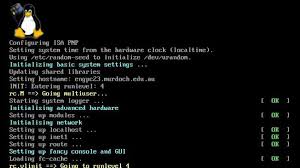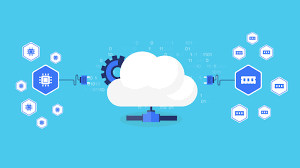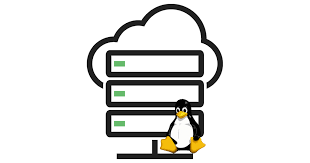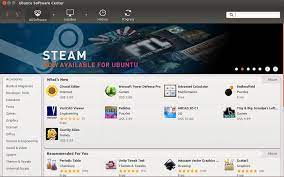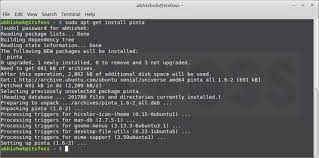Secure Your System: Linux OS Download Made Easy
The Ultimate Guide to Linux OS Download
Linux, the open-source operating system renowned for its stability, security, and flexibility, offers a plethora of distributions tailored to various user needs. Whether you are a developer, sysadmin, or casual user looking to explore the world of Linux, downloading a Linux distribution is the first step towards harnessing the power of this versatile OS.
Choosing the Right Distribution
Before downloading a Linux OS, it’s essential to choose a distribution that aligns with your requirements. Popular distributions like Ubuntu, Fedora, Debian, and CentOS cater to different user preferences in terms of ease of use, software availability, and community support.
Downloading Your Chosen Distribution
Once you’ve selected a distribution, head to the official website of the respective Linux project. Look for the ‘Downloads’ section where you can find various versions and flavours of the distribution. Choose the appropriate version based on your system architecture (32-bit or 64-bit) and download the ISO image file.
Creating Bootable Media
To install Linux on your computer, you’ll need to create a bootable USB drive or DVD from the downloaded ISO image file. Tools like Rufus (for Windows) or Etcher (for macOS and Linux) can help you create bootable media easily.
Installing Linux
Boot your computer from the created bootable media and follow the on-screen instructions to install your chosen Linux distribution. You may have options to dual-boot with an existing operating system or replace it entirely with Linux.
Exploring the World of Linux
Once installed, you’re ready to explore all that Linux has to offer. From command-line tools to graphical interfaces and vast software repositories, Linux provides endless possibilities for customisation and productivity.
Conclusion
Downloading a Linux OS opens doors to a world of innovation and collaboration in the open-source community. With its robust performance and extensive support network, Linux continues to be a top choice for users seeking an alternative operating system experience.
7 Essential Tips for Safely Downloading and Installing Linux OS
- Ensure you download Linux OS from official sources to avoid malware and security risks.
- Choose the right Linux distribution that suits your needs and technical expertise.
- Verify the checksum of the downloaded ISO file to ensure its integrity.
- Consider using a torrent client for downloading large Linux ISO files more efficiently.
- Use a reliable internet connection to prevent interruptions during the download process.
- Read user reviews and forums to gather insights on the performance and compatibility of different Linux distributions.
- Backup important data before installing or updating your Linux OS.
Ensure you download Linux OS from official sources to avoid malware and security risks.
To safeguard your system against potential malware and security threats, it is crucial to download the Linux OS exclusively from official sources. By obtaining the distribution directly from the official website of the Linux project, you can mitigate the risk of downloading compromised or malicious versions. Official sources ensure that you are receiving authentic and secure software, thereby enhancing the safety and integrity of your computing environment.
Choose the right Linux distribution that suits your needs and technical expertise.
When embarking on the journey of Linux OS download, it is crucial to select the appropriate distribution that aligns with your specific requirements and technical proficiency. Choosing the right Linux distribution tailored to your needs ensures a smoother transition and a more fulfilling user experience. Whether you are a novice user seeking simplicity or a seasoned tech enthusiast craving advanced features, selecting a distribution that matches your technical expertise is key to maximising the benefits of using Linux as your operating system.
Verify the checksum of the downloaded ISO file to ensure its integrity.
Verifying the checksum of the downloaded ISO file is a crucial step in the Linux OS download process to guarantee its integrity. By comparing the checksum provided by the official Linux distribution website with the one generated from your downloaded file, you can confirm that the file has not been tampered with or corrupted during the download process. This simple yet effective verification method helps ensure that you are installing a genuine and secure version of the Linux operating system on your device.
Consider using a torrent client for downloading large Linux ISO files more efficiently.
Consider utilising a torrent client when downloading large Linux ISO files to enhance the efficiency of the process. Torrent clients allow for faster and more reliable downloads by leveraging peer-to-peer technology, which distributes the file across multiple users sharing the same content. This approach not only speeds up the download but also reduces the strain on individual servers, making it an effective solution for obtaining sizeable Linux distributions in a timely manner.
Use a reliable internet connection to prevent interruptions during the download process.
When downloading a Linux OS, it is advisable to utilise a stable and reliable internet connection to avoid interruptions during the download process. A consistent internet connection ensures that the download proceeds smoothly without any disruptions, reducing the risk of incomplete downloads or corrupted files. By prioritising a reliable internet connection, users can enhance the efficiency of the download process and minimise any potential delays or errors that may occur due to connectivity issues.
Read user reviews and forums to gather insights on the performance and compatibility of different Linux distributions.
When embarking on the journey of downloading a Linux OS, it is advisable to delve into user reviews and forums to gain valuable insights into the performance and compatibility of various Linux distributions. By tapping into the experiences and opinions shared by fellow users, you can make informed decisions on selecting a distribution that aligns with your specific needs and preferences. User reviews and forums serve as invaluable resources for understanding the strengths, weaknesses, and nuances of different Linux distributions, helping you choose the one that best suits your computing requirements.
Backup important data before installing or updating your Linux OS.
Before embarking on the journey of installing or updating your Linux OS, it is crucial to heed the wise advice of backing up your important data. Safeguarding your files, documents, and settings ensures that in the event of any unforeseen issues during the installation or update process, you can easily restore your valuable information without facing data loss. Taking this proactive step not only provides peace of mind but also serves as a safety net, allowing you to proceed with confidence knowing that your data is secure and protected.





